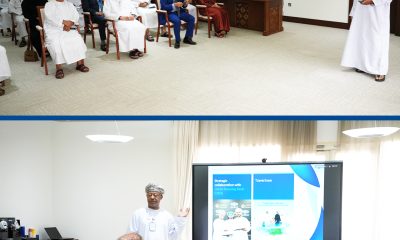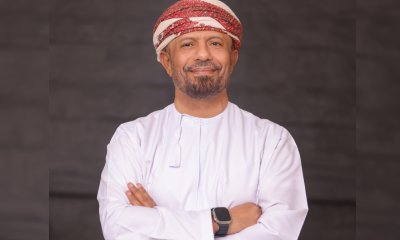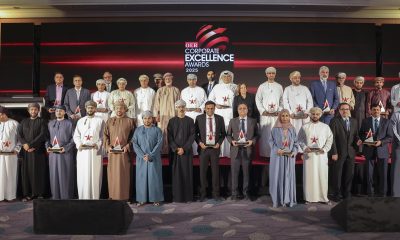Economy
Aramco’s record IPO starts November 17; size of offering pending

(Bloomberg) –Saudi Aramco will allow investors to start bidding for shares in the world’s most-profitable company from Nov. 17. It left potential buyers in the dark about the size of the stake it plans to sell and the pricing range.
The Saudi stock exchange rules prohibits the oil giant from listing additional shares for six months after the start of trading, according to its more than 650-page prospectus. Also, the Saudi government, the company’s sole owner, won’t offer any additional shares during the 12-month period after listing, but retains the right to sell to foreign governments or investors affiliated with foreign governments.
Key details:
- Institutional book-building period: Nov. 17-Dec. 4
- Retail subscription period: Nov. 17-Nov. 28
- Targeted percentage of shares allocated to individual investors will be up to 0.5% of shares
- Final pricing: Dec. 5
- Refund of excess subscription amount to individual investors: Dec. 12
- Aramco sets up share-incentive plan for employees
- Click here for prospectus
Saudi Arabia is pulling out all the stops to ensure the success of the IPO after Crown Prince Mohammed bin Salman finally decided to offer shares in the world’s largest oil producer. The kingdom cut taxes on Aramco for a third time, revealed incentives for investors not to sell shares and is considering boosting dividends further.
While the prospectus includes Aramco’s profits for the first nine months and details of the company’s operations, it doesn’t include any indication of what valuation the government hopes to achieve. Price guidance for the share sale is expected next week, but people familiar with the deal have told Bloomberg that Crown Prince Mohammed bin Salman would be satisfied with a valuation of between $1.6 trillion and $1.8 trillion.
Read: World’s Biggest IPO Tests Saudis’ Faith in Their Crown Prince
Analysts from 16 banks have offered a valuation on the company, ranging in estimates from $1.1 trillion at the bottom right up to $2.5 trillion. The midpoint was $1.75 trillion, according to people who’ve reviewed all the research.
Aramco earned net income of $68.2 billion in the first nine months compared with $83.1 billion a year ago. Revenue slipped to $217 billion from $233 billion.
Saudis and China
With the Aramco IPO, there’s a lot at stake for Prince Mohammed, Saudi Arabia’s de facto ruler, and his Vision 2030 plan to overhaul the economy. He proposed the offering in 2016 as a way to expose the state-owned firm to the rigors of the market and raise money for the sovereign wealth fund.
The richest Saudis are being pressed to commit large sums to the IPO, according to people familiar with the matter. Among those considering sizable purchases are the Olayan family and Prince Alwaleed bin Talal, the billionaire investor who was held for several weeks in Riyadh’s Ritz-Carlton Hotel during 2017’s declared corruption crackdown.
READ: Saudis Replace Aramco Chairman With Wealth Fund Boss Before IPO
China, the world’s largest oil importer, may commit as much as $10 billion through sovereign wealth funds and other state-owned enterprises, according to people familiar with the situation. An investment would be a hedge against rising oil prices and chime with the objectives of Beijing’s ambitious Belt and Road program.
-

 Alamaliktistaad Magazines2 months ago
Alamaliktistaad Magazines2 months agoAlam Al Iktisaad – September 2025 Edition
-

 News2 months ago
News2 months agoKitchenomiKs Secures Investment of US$3.2M Led by Jasoor Ventures
-

 Banking & Finance2 months ago
Banking & Finance2 months agoOman Arab Bank Highlights Its Ongoing Strategic Initiatives and Future Plans
-

 News2 months ago
News2 months agoIEA Expects Global Oil Market to Remain Oversupplied in 2026
-

 Energy2 months ago
Energy2 months agoWLGA Middle East LPG Summit & Expo 2025 to be held at OCEC on November 10 and 11
-

 Real Estate2 months ago
Real Estate2 months agoAl Mouj Muscat Unveils Azura Beach Residences Phase 2: A New Chapter in Waterfront Living
-

 Leaders Speak1 month ago
Leaders Speak1 month agoDhofar International Development and Investment Company: Driving Sustainable Growth and Strategic Synergies in Oman’s Investment Landscape
-

 Events1 month ago
Events1 month agoOER Corporate Excellence Awards 2025 Honours Entities and Innovations in Oman






























